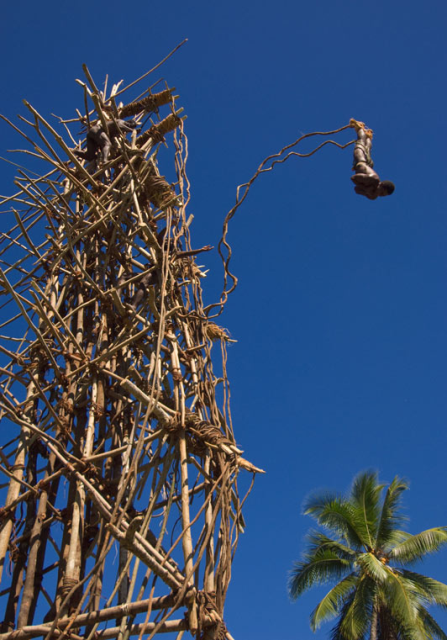Screams of anxiety fill the air when a small, capsule-like open cabin with four people on board is catapulted into the Singaporean sky with a speed of 120km/hour: welcome to the world of reversed bungee jumping![1]
Surely, it’s not the launch of a spaceship, the cabin being tightly held by cables securely connected to two towers, resulting in the opposite of what bungee jumping (or Bungy Jumping – BJ) stands for: a plunge into the deep. It’s a thrill like the ones experienced during a rollercoaster ride; scary, but without danger.
Ay me, doesn’t that make bungee jumping a soft adventure after all? No special skills needed and risk free? Well, yes, as far as the Singaporean version is concerned, it certainly is. But what about the, let’s say initial BJ, jumping upside down from some 40 to 100m, if not more, from a tall structure connected to a large elastic cord? Can’t say that’s without risk, can we?
Yet, hundreds of thousands young and not-so-young, courageous people are actively engaged in BJ. No wonder it’s widely spread all over South East Asia, with the exception of a few countries hitherto (e.g. Vietnam, Cambodia and Brunei).
Originally, it were young men of the Pacific (Vanuata) and Mexico (Papantla) who jumped from elevated podia made of wood with lianas fastened to their ankles, not for the fun of it, but as a test of courage and passage into manhood; a long-lasting tradition dating back many centuries.
Then, end of the 1970s students from the Dangerous Sports Club of the University of Oxford started to make (non-authorized) jumps from bridges in the UK and the USA, introducing modern BJ. Shortly thereafter it was commercialized by a New Zealander, A.J. Hackett, commonly regarded as the founding father of modern BJ. He broke new ground by testing his self-made equipment by jumping off the Eiffel Tower in Paris, surviving in one piece.
His company and a few others made it the safe adventure it is deemed to be today.
So where is BJ to be found in ASEAN, the collective name of the ten countries that together form South East Asia (SEA)? To start with, obviously in its leading tourism countries Thailand and Malaysia.
In Thailand, Pattaya had the honour of being the first BJ spot in South East Asia, since followed by Phuket and Chiang Mai. The Jungle Bungy Jump at the X-Center offers a 50 metres rise above attractive landscaped gardens where you will get a fantastic view of Chiang Mai countryside from the very top. At Phuket, look for adventurous challenges of jumping 50 metres over the green-blue water of the Jungle Lagoon at the Jungle Bungy Jump in Kathu. Another place to hurl yourself from great heights and live to tell your friends about it is at World Bungy Patong, claiming to be Southern Thailand’s highest Bungy. Safety procedures are rigorously carried out to ensure you the most amazing rush without worry.
In Malaysia, it’s a 20min. drive from the capital to the small town of Bandar Sunway. The Sunway Lagoon Entertainment Park offers a relatively short dive (21m); sufficiently scary for the first timer though. Like Singapore, the Park also has a reversed BJ, aptly dubbed the G-Force X (as G-forces reach up till 5G).
Dare devils are advised to check out whether a jump from the KL Tower is possible (free fall base jumping is, but BJ questionable).
Those wanting to stretch their legs a bit further after visiting magnificent Luang Prabang should head towards Van Vieng (Laos) for a terrific jump from a bamboo platform, as rumour has it. And it won’t be long before Myanmar will add soft bungee excitement to cultural delight with conceivable jumps from the Gokteik Viaduct (nearby Pyin Oo Lwin), Thanlwin Bridge (Mawlamylne; former Moulmain) or from a hot air balloon above Bagan, as suggested by the website www.myanmarburma.com.
In the meantime, the Philippines joined the pack with an imposing BJ centre at Danao’s Adventure Park (2 hours ride from Tagbilaran city), fittingly named ‘The Plunge’. The Park aims at providing responsible travel to natural areas that caters to tourists who prefer soft and hard adventure tours. Check its website before you go as it happens that the Plunge and other activities in the Park are temporarily closed for maintenance.







